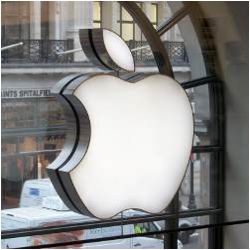
Over the last few years, Apple has unleashed a post-PC world that has changed business, science, social interactions and the way we think about information and things. The love for All Things Apple — particularly iPhones and iPads — has helped Apple emerge as the most revered brand in the world. At one point last summer, the company’s market capitalization reached $656 billion — the highest ever recorded by any company.
However, somewhere on the road to invincibility cracks have begun to appear. Recently, Apple’s critically panned map service was superseded by Google Maps, a group of users has complained about glitches with the camera in the iPhone 5, and production problems have slowed product delivery for the iPhone 5 and the iPad mini. Meanwhile, a growing number of designers and engineers are questioning the company’s direction in the post-Jobs era. And in November, a few of Apple’s top executives were summarily fired.
Has Apple lost its Mojo?
You would certainly think so if you have tuned into recent remarks rumbling through the media and blogosphere. For example: "Apple is eventually doomed. Yes, the most valuable company on the planet will slowly fade into stagnant mediocrity," proclaimed ex-Apple engineer Michael Lopp in a November 11 blog post. He argued that a more collaborative culture nurtured by CEO Tim Cook is destined for failure. "Close your eyes and imagine a meeting with Steve Job . . . Does the word collaboration ever enter your mind? Not mine," he wrote.
Another former Apple executive, computer scientist Dan Crow, recently penned a column in the UK’s Guardian saying that Apple’s trajectory will be strictly downhill from here. He noted that the recent map debacle was based on entirely different circumstances than past problems, including the iPhone 4 antennae problem and the iCloud outage of 2012. This time around, "Apple deliberately offered an inferior product, because its fight over Android was deemed more important than its users," he pointed out.
Time will tell whether these critics are on the mark. However, news of Apple’s demise may be severely overblown. For one thing, a backlash was inevitable as the company morphed from underdog to top dog. For another, sales continue to flourish and Apple continues to innovate. For example, the iPad mini has generally received rave revues and the company’s new lightning connector provides the foundation for a new generation of consumer, medical, and industrial devices that work with iPhones and iPads.
Axel Roesler, associate professor and chair of the Interaction Design Program at the University of Washington, says that much of the current ruckus is rooted in Apple adapting to a new era of design. While the company’s hardware has followed a minimalistic "form follows function" approach, recent software has taken a skeuomorphic design approach that uses analog abstractions such as yellow notes and a calendar binder to create familiar visual metaphors.
"Apple has recognized that its software and hardware design approaches didn’t match," Roesler says. What’s more, the skeuomorphic style didn’t fully exploit the capabilities of the retina display and more sophisticated users in a post-PC world. "Waves passed through the media and reached the public because it was the first time designers criticized Apple," he says. Cupertino has since pulled the plug on skeuomorphic design and "recent management change create expectations for a grand overhaul of Apple’s interface design."
Another thing that has bristled some observers, Roesler says, is that Apple has become progressively bolder about incorporating big new technologies into its products. This includes retina displays with "better-than-print resolution" and computing devices with solid-state drives and no optical drives or ports. Similarly, the iPhone 5 radicalized "design, performance, and miniaturization" to the point that some users were uncomfortable with it, he notes.
Of course, no company stays on top forever — a fact that IBM and Microsoft know all too well. Moreover, technology is advancing at warp speed and the opportunities of today’s marketplace are exceeded only by the challenges of meeting and exceeding growing consumer expectations. Nevertheless, "Apple has demonstrated many times over how design change can result in dramatically successful products," Roesler says. "All eyes are now on Apple."
Samuel Greengard is an author and journalist based in West Linn, Ore.



Join the Discussion (0)
Become a Member or Sign In to Post a Comment